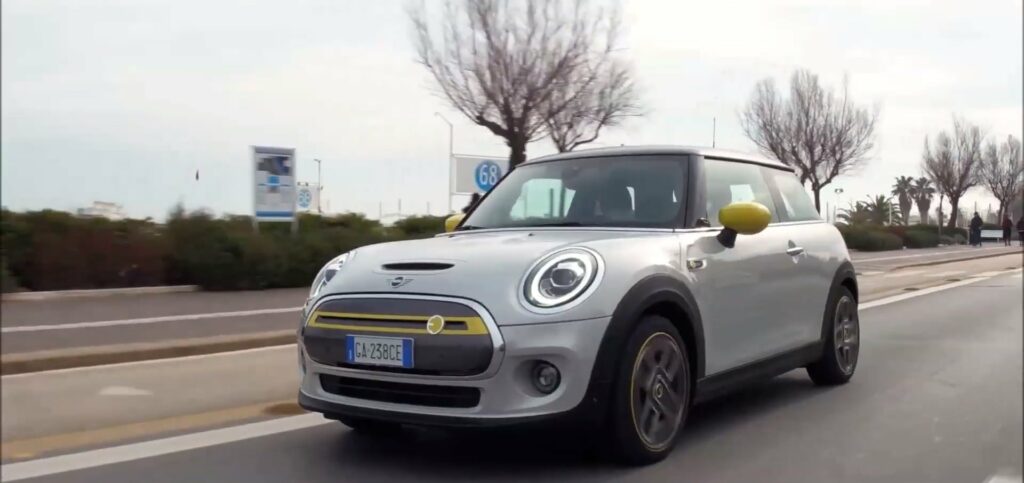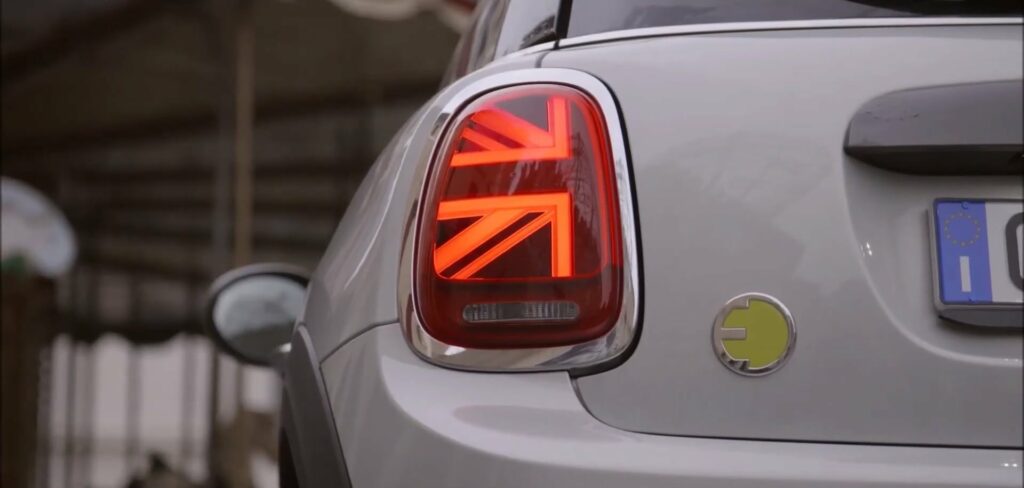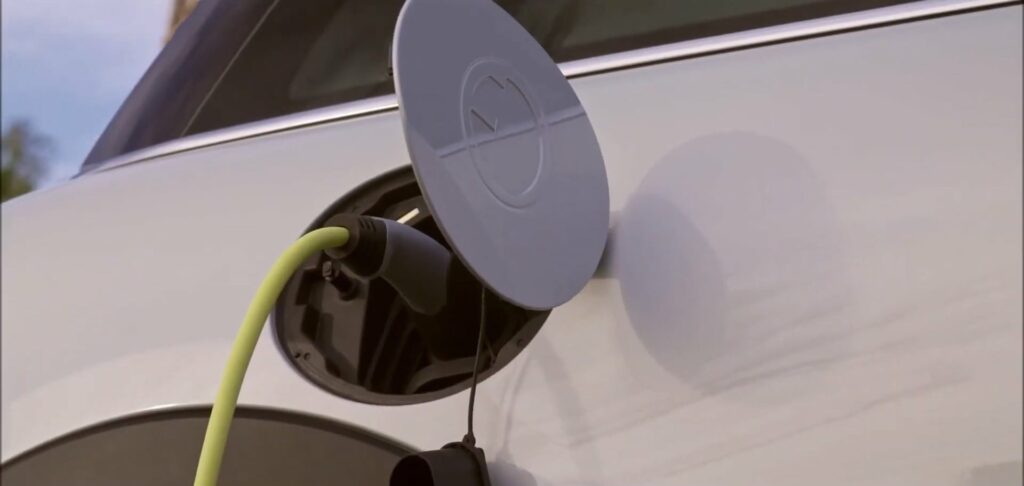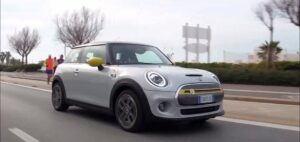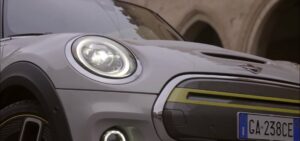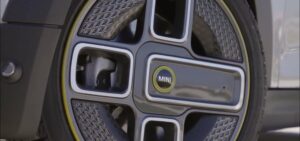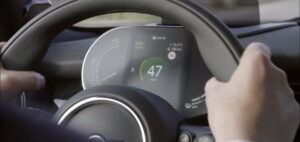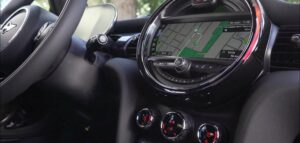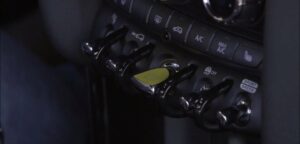Mini Cooper SE
The MINI Cooper SE is the first all-electric premium car of the popular British brand Cooper. The electric car concept was first presented in 2017 in Frankfurt. The presentation of the production version of the electric car took place only two years later in Rotterdam.
The electric car is equipped with a synchronous electric motor with 135 kW of power and 270 N⋅m of torque. The drive design is constructed in such a way as to provide the electric car with a high level of power delivery when energy utilization is as efficient as possible and ensures the smooth running of the car. The car accelerates from 0 to 100 km in 7.3 seconds. The maximum speed is 150 km/h.

The Cooper SE is equipped with a high-voltage lithium-ion battery with 12 modules. The battery has a capacity of up to 32.6 kWh. According to the WLTP cycle, the battery capacity is enough to cover a distance of 240-270 kilometers.
Recharge the battery at 80% of AC power of 11 kW (through the Type 2 port) can be achieved in about 2.5 hours, and at 100% – 3.5 hours. Faster electric cars can be recharged at CCS Combo 50-kW fast charging stations. At this station, you can recharge the battery at 80% in 35 minutes.
Due to the convenient T-shaped battery, the designers were able to place it under the floor, not limiting the capacity of the interior and the trunk of the car. The volume of the luggage compartment of the electric car has remained the same as in the fuel version – 211 liters. If necessary, it can be increased to 730 liters, for this purpose it is necessary to fold the rear seat backs.

The control system of the electric car offers the driver a choice of four driving modes – “Green”, “Green+”, “Mid” and “Sport”. The first two are responsible for the economical driving mode and are perfect for travel within the city. During the last two modes, the movement of the electric car is sharper and more dynamic. They are best used for longer journeys.
The standard configuration of the Cooper SE includes an acoustic pedestrian protection system, dual-zone climate control, navigation system, and climate control, as well as other elements, including wireless charging for gadgets and other devices.
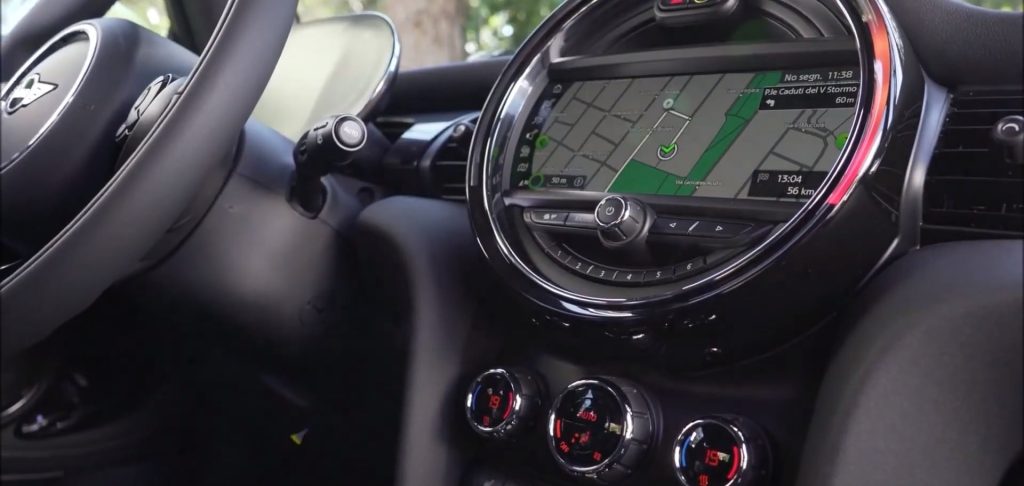
The climate control system allows you to quickly warm up the cabin in cold weather, maximizing battery life through the efficient use of the heat pump.
Many functions can be controlled remotely using a specially developed app, such as doors, charging, and climate control.
The design of the electric car Cooper SE is made in the corporate style of MINI – these include square rounded forms, clear roof lines, and standard wide-spaced wheels.
The body surface of the electric car is optimized for better aerodynamics. For this purpose, the car is equipped with a closed hexagonal grille with yellow inserts, LED headlights, and four-spoke 16-inch wheels with the original pattern. Optionally, the electric car can be equipped with larger disks – 17-inch.
Externally, the electric nature of the electric car is emphasized by the charging port, which is located above the rear right wheel of the car, instead of the cover for the fuel tank.

When decorating the interior of the first electric car of the brand, the designers did not refuse the usual style for Cooper cars. Its distinctive feature was the interior trim, ergonomics, and elaboration of details down to the last detail.
The virtual dashboard of the electric car is equipped as standard with a 6.5-inch display, as well as a 5.5-inch touch screen, which is located in the center, wherein the fuel car was a speedometer. Optionally, the multimedia system can be equipped with an 8.8-inch screen.
In addition to the familiar Cooper controls, engineers have developed a new gearshift system and a new electronic parking brake for the electric car.
The premium electric car from MINI Cooper will be offered in four different interior trims. Each of them will be distinguished by its characteristic features, such as the range of colors, the finishing materials for the seats, as well as all sorts of adjustment elements, buttons, and other details.
| Performance | |
| Acceleration 0 – 100 km/h | 7.3 sec |
| Top Speed | 150 km/h |
| Electric Range | 185 km |
| Total Power | 135 kW (184 PS) |
| Total Torque | 270 Nm |
| Drive | Front |
| Battery and Charging | |
| Battery Capacity | 32.6 kWh |
| Battery Useable | 28.9 kWh |
| Europe | |
| Charge Port | Type 2 |
| Port Location | Right Side – Rear |
| Charge Power | 11 kW AC |
| Charge Time (0->185 km) | 3h15m |
| Charge Speed | 60 km/h |
| Fastcharge Port | CCS |
| FC Port Location | Right Side – Rear |
| Fastcharge Power (max) | 49 kW DC |
| Fastcharge Time (19->148 km) | 29 min |
| Fastcharge Speed | 260 km/h |
| Energy Consumption | |
| EVDB Real Range | |
| Range | 185 km |
| Vehicle Consumption | 156 Wh/km |
| CO2 Emissions | 0 g/km |
| Vehicle Fuel Equivalent | 1.8 l/100km |
| WLTP Ratings (TEL) | |
| Range | 234 km |
| Rated Consumption | 152 Wh/km |
| Vehicle Consumption | 124 Wh/km |
| CO2 Emissions | 0 g/km |
| Rated Fuel Equivalent | 1.7 l/100km |
| Vehicle Fuel Equivalent | 1.4 l/100km |
| WLTP Ratings (TEH) | |
| Range | 203 km |
| Rated Consumption | 176 Wh/km |
| Vehicle Consumption | 142 Wh/km |
| CO2 Emissions | 0 g/km |
| Rated Fuel Equivalent | 2.0 l/100km |
| Vehicle Fuel Equivalent | 1.6 l/100km |
| TEL = Test Energy Low | TEH = Test Energy High | |
|
Rated = official figures as published by manufacturer. Rated consumption and fuel equivalency figures include charging losses.
|
|
|
Vehicle = calculated battery energy consumption used by the vehicle for propulsion and on-board systems.
|
|
| Real Energy Consumption between 103 – 222 Wh/km | |
| City – Cold Weather | 161 Wh/km |
| Highway – Cold Weather | 222 Wh/km |
| Combined – Cold Weather | 186 Wh/km |
| City – Mild Weather | 103 Wh/km |
| Highway – Mild Weather | 170 Wh/km |
| Combined – Mild Weather | 134 Wh/km |
| Energy use for each trip will vary considerably depending on the driver and the conditions. Therefore, we have provided a range of estimates which can be useful in developing an understanding of the potential benefits of this technology. | |
| Dimensions and Weight | |
| Length | 3850 mm |
| Width | 1727 mm |
| Width with mirrors | No Data |
| Height | 1432 mm |
| Wheelbase | 2495 mm |
| Weight Unladen (EU) | 1440 kg |
| Gross Vehicle Weight (GVWR) | 1775 kg |
| Max. Payload | 410 kg |
| Cargo Volume | 211 L |
| Cargo Volume Max | 731 L |
| Cargo Volume Frunk | No Data |
| Roof Load | No Data |
| Tow Hitch Possible | No Data |
| Towing Weight Unbraked | 0 kg |
| Towing Weight Braked | 0 kg |
| Vertical Load Max | No Data |
| Miscellaneous | |
| Seats | 4 people |
| Isofix | No Data |
| Turning Circle | 10.7 m |
| Platform | No Data |
| Car Body | Hatchback |
| Segment | B – Small |
| Roof Rails | No |
| EV Dedicated Platform | No Data |
Home and Destination Charging (0 -> 100%)
A public charging station is required to use the highest possible charging rate. The EVSE/charging station’s charging capacity affects how long it takes to fully charge the battery. The table below shows all possible options for fully charging the Mini Cooper SE.
In Europe, plugging an electric car into an outlet is often as easy as plugging it into a household outlet, but there are differences from country to country. The table below shows the different ways to charge the Mini Cooper SE, but in some countries some chargers may not be available.
Type 2 ( IEC 62196)

| Charging Point | Max. Power | Power | Time | Rate |
| Wall Plug (2.3 kW) | 230V / 1x10A | 2.3 kW | 15 hours | 12 km/h |
| 1-phase 16A (3.7 kW) | 230V / 1x16A | 3.7 kW | 9h15m | 20 km/h |
| 1-phase 32A (7.4 kW) | 230V / 1x32A | 7.4 kW | 4h45m | 39 km/h |
| 3-phase 16A (11 kW) | 400V / 3x16A | 11 kW | 3h15m | 57 km/h |
| 3-phase 32A (22 kW) | 400V / 3x16A | 11 kW | 3h15m | 57 km/h |
Fast Charging (10 -> 80%)
If you want to enjoy driving an electric car, one of the most important features to consider is the number of miles per hour the car can travel while charged. This is called the “range” of the car. All electric cars have a certain range, even if they are 100% charged. This is because they do not have an internal combustion engine to lean on if you need to drive a long distance.
Max. Power: The maximum power provided by the charging point
Avg. Power: The average power provided by the charging point during a session of 10% to 80%.
Time: the time it takes to charge from 10% to 80%
Speed: the average charging rate during the session of 10% to 80%
Combined Charging System (CCS Combo 2)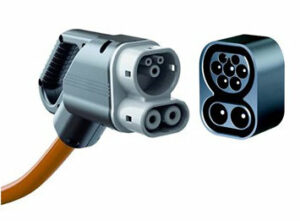
| Charging Point | Max. Power | Avg. Power | Time | Rate |
| CCS (50 kW DC) | 49 kW | 44 kW | 29 min | 260 km/h |
| CCS (175 kW DC) | 49 kW | 44 kW | 29 min | 260 km/h |
| CCS (350 kW DC) | 49 kW | 44 kW | 29 min | 260 km/h |
| Brand | Mini |
| Model | Cooper SE |
| Body Style | Hatchback |
| Car Engine | electric |
| Motor power | 135 |
| Maximum Torque, Nm | 270 |
| Battery Energy, kWh | 32.6 |
| Power reserve (NEDC/EPA/WLTP), km | - / - / 185 |
| Level Charging (230/400/DC), hours | - / 3.15 / 0.29 |
| Electrical Acceleration, 0-100 km/h (0-62.1 mph) in sec | 7.3 |
| Top Speed, km/h | 150 |
